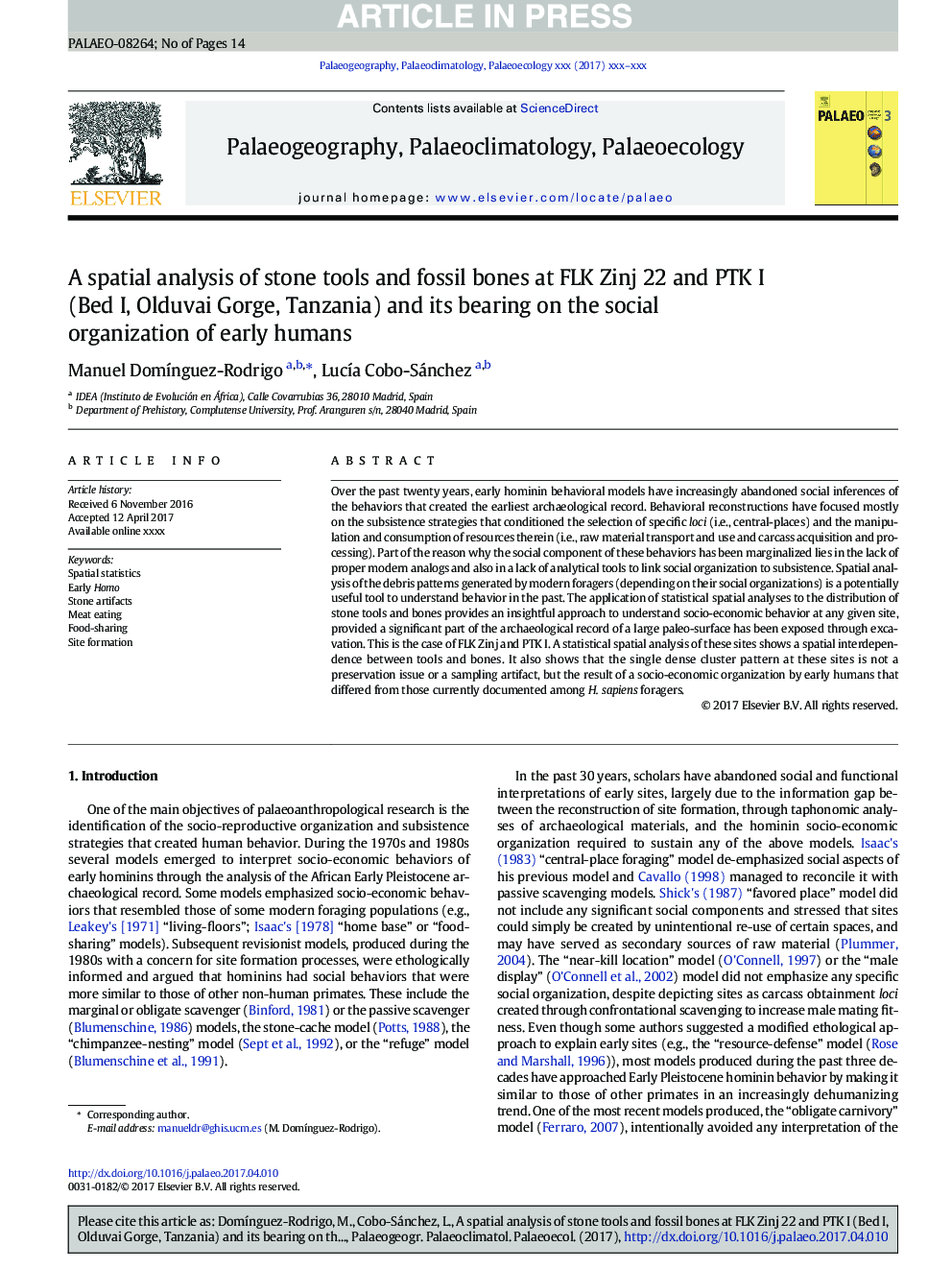| Article ID | Journal | Published Year | Pages | File Type |
|---|---|---|---|---|
| 8868525 | Palaeogeography, Palaeoclimatology, Palaeoecology | 2017 | 14 Pages |
Abstract
Over the past twenty years, early hominin behavioral models have increasingly abandoned social inferences of the behaviors that created the earliest archaeological record. Behavioral reconstructions have focused mostly on the subsistence strategies that conditioned the selection of specific loci (i.e., central-places) and the manipulation and consumption of resources therein (i.e., raw material transport and use and carcass acquisition and processing). Part of the reason why the social component of these behaviors has been marginalized lies in the lack of proper modern analogs and also in a lack of analytical tools to link social organization to subsistence. Spatial analysis of the debris patterns generated by modern foragers (depending on their social organizations) is a potentially useful tool to understand behavior in the past. The application of statistical spatial analyses to the distribution of stone tools and bones provides an insightful approach to understand socio-economic behavior at any given site, provided a significant part of the archaeological record of a large paleo-surface has been exposed through excavation. This is the case of FLK Zinj and PTK I. A statistical spatial analysis of these sites shows a spatial interdependence between tools and bones. It also shows that the single dense cluster pattern at these sites is not a preservation issue or a sampling artifact, but the result of a socio-economic organization by early humans that differed from those currently documented among H. sapiens foragers.
Related Topics
Physical Sciences and Engineering
Earth and Planetary Sciences
Earth-Surface Processes
Authors
Manuel DomÃnguez-Rodrigo, LucÃa Cobo-Sánchez,
